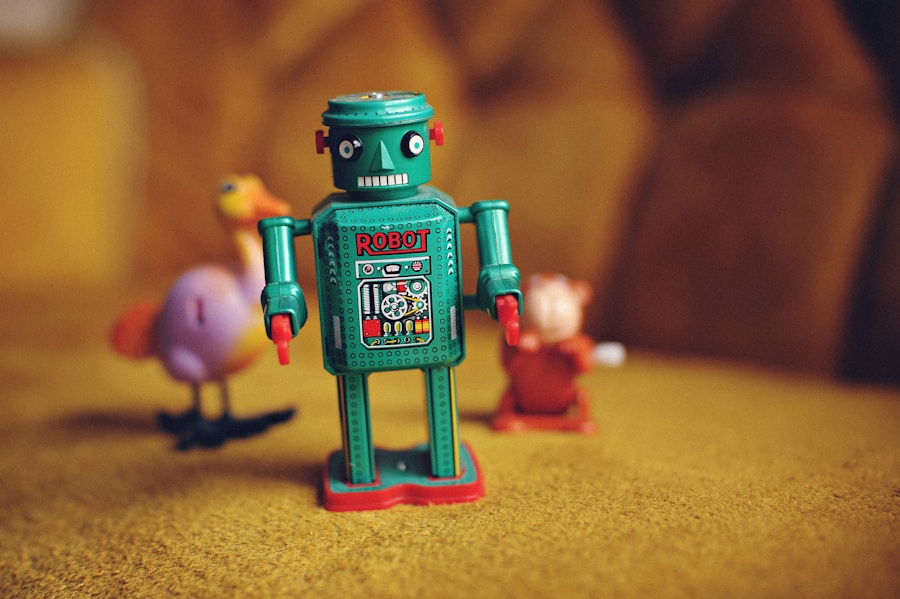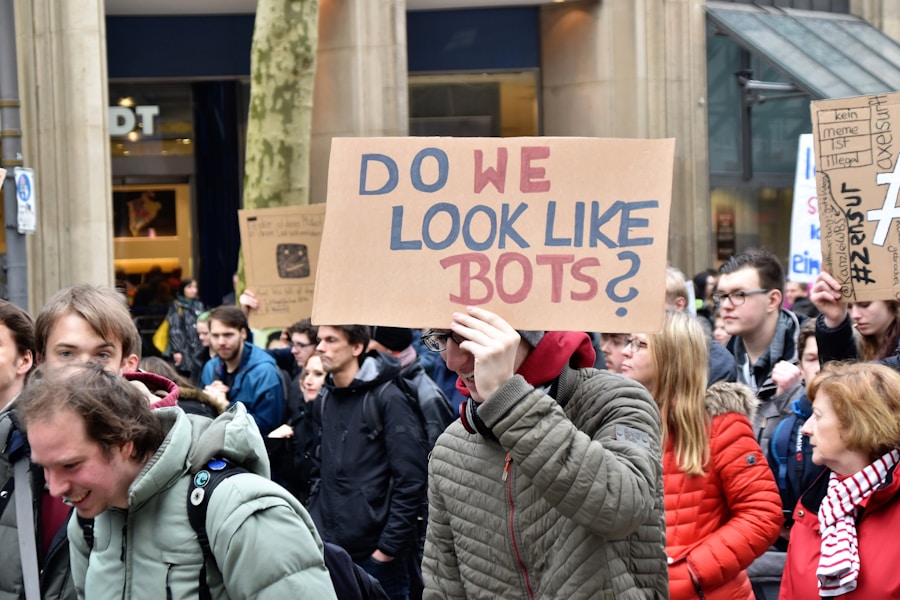In recent years, the proliferation of technology has led to a significant transformation in customer service, with chatbots emerging as a pivotal component of this evolution. Initially, chatbots were rudimentary tools designed to handle basic inquiries, often resulting in frustrating experiences for users. However, advancements in artificial intelligence (AI) and natural language processing (NLP) have enabled these digital assistants to evolve into sophisticated systems capable of engaging in meaningful conversations.
This evolution has been driven by the increasing demand for immediate responses and 24/7 availability from consumers, who expect businesses to be accessible at all times. The rise of chatbots can also be attributed to the growing volume of customer interactions across various platforms. As businesses expand their digital presence, the sheer number of inquiries can overwhelm traditional customer service teams.
Chatbots provide a scalable solution, allowing companies to manage high volumes of requests without compromising on response times or customer satisfaction. According to a report by Gartner, by 2025, 75% of customer service interactions will be powered by AI-driven technologies, underscoring the rapid adoption of chatbots in the industry. This shift not only enhances operational efficiency but also aligns with the modern consumer’s preference for instant gratification.
Key Takeaways
- Chatbots are becoming increasingly popular in customer service, providing 24/7 support and quick responses to customer inquiries.
- Chatbots are changing the customer service landscape by automating routine tasks, reducing response times, and improving overall customer experience.
- Using chatbots for customer service can lead to benefits such as cost savings, improved efficiency, and enhanced customer satisfaction.
- Implementing chatbots in your customer service strategy requires careful planning, integration with existing systems, and ongoing monitoring and optimization.
- Challenges in using chatbots for customer service include ensuring accurate and natural language processing, maintaining a personalized customer experience, and addressing security and privacy concerns.
How Chatbots are Changing the Customer Service Landscape
Redefining Personalization in Customer Service
With the ability to analyze vast amounts of data, these AI-driven tools can tailor interactions based on individual customer preferences and past behaviors. For example, a chatbot can recognize returning customers and greet them by name, suggesting products or services based on their previous purchases. This level of personalization fosters a deeper connection between the brand and the consumer, ultimately leading to increased loyalty and satisfaction.
The Future of Personalized Experiences
As businesses continue to leverage data analytics and machine learning, the potential for chatbots to deliver personalized experiences will only grow.
The Benefits of Using Chatbots for Customer Service

The advantages of implementing chatbots in customer service are manifold, making them an attractive option for businesses seeking to enhance their operations. One of the most notable benefits is cost efficiency. By automating routine inquiries and tasks, companies can significantly reduce labor costs associated with hiring and training customer service representatives.
A study by Juniper Research estimated that chatbots could save businesses over $8 billion annually by 2022 through reduced operational costs and improved efficiency. In addition to cost savings, chatbots contribute to improved response times and availability. Unlike human agents who may require breaks or have limited working hours, chatbots can operate around the clock, providing instant responses to customer inquiries at any time of day.
This capability is particularly valuable for businesses with a global customer base, as it ensures that customers in different time zones receive timely assistance. Furthermore, chatbots can handle multiple inquiries simultaneously, eliminating wait times and enhancing overall customer satisfaction.
Implementing Chatbots in Your Customer Service Strategy
| Metrics | Value |
|---|---|
| Customer Satisfaction | 85% |
| First Contact Resolution | 70% |
| Cost Savings | 30% |
| Response Time | 50% faster |
Integrating chatbots into a customer service strategy requires careful planning and execution to ensure that they effectively meet business objectives and customer needs. The first step in this process is identifying the specific use cases for which chatbots will be deployed. Businesses should assess common customer inquiries and pain points to determine where automation can provide the most value.
For example, if a company frequently receives questions about order status or product availability, these areas may be ideal for chatbot implementation. Once use cases are established, selecting the right technology platform is crucial. There are various chatbot development platforms available, each offering different features and capabilities.
Businesses must consider factors such as ease of integration with existing systems, scalability, and customization options when choosing a platform. Additionally, it is essential to ensure that the chatbot is designed with user experience in mind; this includes creating intuitive conversation flows and incorporating natural language understanding to facilitate smooth interactions.
Overcoming Challenges in Using Chatbots for Customer Service
Despite their numerous advantages, deploying chatbots in customer service is not without challenges. One significant hurdle is ensuring that chatbots can effectively understand and respond to diverse customer inquiries. While advancements in NLP have improved chatbot capabilities, there are still limitations in understanding context and nuances in human language.
Businesses must invest in ongoing training and refinement of their chatbots to enhance their performance over time. Another challenge lies in managing customer expectations regarding chatbot interactions. Some customers may prefer speaking with human agents for complex issues or may become frustrated if they feel that their concerns are not being adequately addressed by a chatbot.
To mitigate this issue, businesses should implement a seamless escalation process that allows customers to transition from chatbot interactions to human support when necessary. This hybrid approach ensures that customers receive the assistance they need while still benefiting from the efficiency of chatbot technology.
Best Practices for Utilizing Chatbots in Customer Service

To maximize the effectiveness of chatbots in customer service, businesses should adhere to several best practices that enhance user experience and operational efficiency. First and foremost, it is essential to maintain transparency about the chatbot’s capabilities. Customers should be informed that they are interacting with an AI-driven tool rather than a human agent.
This transparency helps manage expectations and fosters trust in the technology. Additionally, continuous monitoring and analysis of chatbot interactions are vital for ongoing improvement. By reviewing conversation logs and identifying common issues or areas where customers may struggle, businesses can refine their chatbots’ responses and enhance their overall performance.
Regular updates based on user feedback can also help ensure that chatbots remain relevant and effective in addressing customer needs.
The Future of Chatbots in Customer Service
As technology continues to advance at a rapid pace, the future of chatbots in customer service looks promising. One emerging trend is the integration of voice recognition technology into chatbot systems, allowing customers to interact using voice commands rather than text input. This development could further streamline customer interactions and make it easier for users to access information quickly.
Moreover, as machine learning algorithms become more sophisticated, chatbots will likely become even more adept at understanding context and providing personalized responses. The ability to analyze emotional cues from text or voice interactions could enable chatbots to respond empathetically to customer concerns, enhancing the overall experience. As businesses increasingly recognize the value of AI-driven solutions, we can expect further innovations that will redefine how customer service is delivered.
Success Stories of Companies Revolutionizing Customer Service with Chatbots
Numerous companies have successfully harnessed the power of chatbots to transform their customer service operations, setting benchmarks for others in the industry. One notable example is Sephora, a global cosmetics retailer that has integrated a chatbot into its mobile app and website. The Sephora Virtual Artist chatbot allows customers to try on makeup virtually using augmented reality technology while also providing personalized product recommendations based on user preferences and past purchases.
This innovative approach not only enhances the shopping experience but also drives sales by guiding customers toward products they are likely to enjoy. Another success story comes from H&M, which has implemented a chatbot on its website and social media platforms to assist customers with fashion advice and product inquiries. The H&M chatbot engages users by asking questions about their style preferences and suggesting outfits based on their responses.
This personalized interaction not only improves customer satisfaction but also encourages users to explore new products they may not have considered otherwise. These examples illustrate how companies can leverage chatbots not just as tools for efficiency but as integral components of their overall customer engagement strategies. By embracing this technology, businesses can create more meaningful interactions with their customers while streamlining operations and driving growth in an increasingly competitive landscape.












Leave a Reply